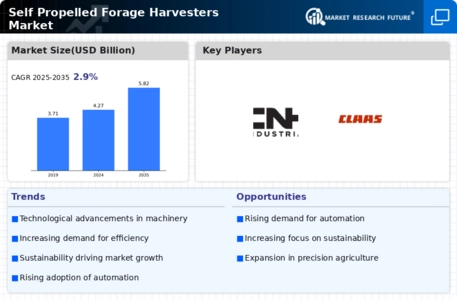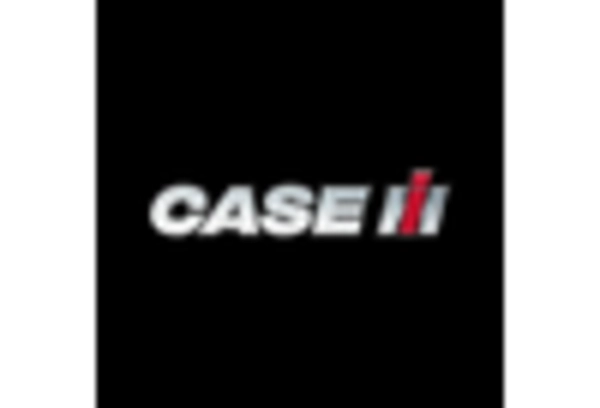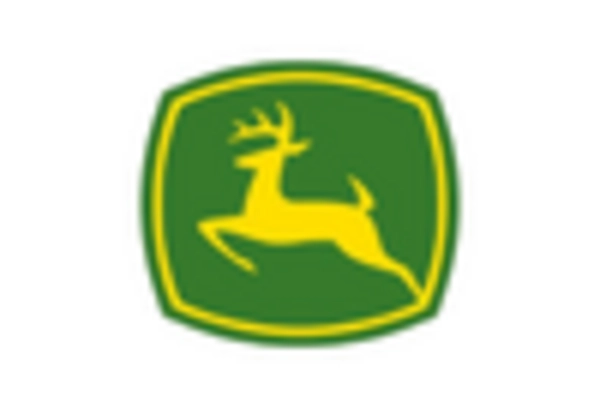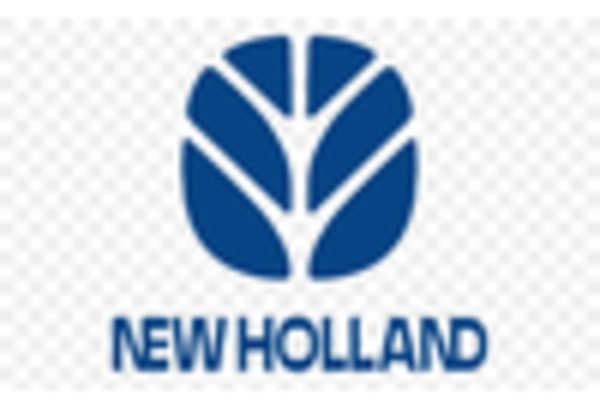Rising Demand for High-Quality Forage
The Self Propelled Forage Harvesters Market is significantly influenced by the increasing demand for high-quality forage among livestock producers. As the global population continues to grow, the need for efficient livestock production systems becomes more pressing. High-quality forage is essential for maximizing livestock health and productivity, which in turn drives the demand for advanced harvesting equipment. According to recent data, the forage production sector is projected to expand, with a corresponding increase in the adoption of self propelled forage harvesters. This trend indicates that farmers are investing in modern equipment to ensure optimal forage quality, thereby enhancing their competitive edge in the market. Consequently, the rising demand for superior forage is a critical driver for the self propelled forage harvesters market.
Sustainability and Environmental Regulations
The Self Propelled Forage Harvesters Market is increasingly shaped by sustainability initiatives and environmental regulations. As concerns about climate change and environmental degradation grow, agricultural practices are under scrutiny. Farmers are now more inclined to adopt equipment that minimizes environmental impact, such as self propelled forage harvesters that are designed for fuel efficiency and reduced emissions. Regulatory bodies are also implementing stricter guidelines regarding emissions and sustainability practices, which further encourages the adoption of eco-friendly harvesting solutions. This shift towards sustainable agriculture not only aligns with global environmental goals but also appeals to consumers who prefer sustainably sourced products. Therefore, the emphasis on sustainability is a significant driver for the self propelled forage harvesters market.
Growing Awareness of Precision Farming Techniques
The Self Propelled Forage Harvesters Market is increasingly influenced by the growing awareness of precision farming techniques. Farmers are becoming more educated about the benefits of precision agriculture, which emphasizes the use of data-driven decision-making to optimize crop production. This awareness is leading to a greater adoption of self propelled forage harvesters equipped with advanced technologies that facilitate precision farming. For example, these harvesters can be integrated with software that analyzes soil health and crop conditions, allowing for more targeted harvesting strategies. As farmers recognize the potential for increased yields and reduced waste through precision farming, the demand for specialized harvesting equipment is likely to rise. Thus, the growing awareness of precision farming is a pivotal driver for the self propelled forage harvesters market.
Increased Investment in Agricultural Mechanization
The Self Propelled Forage Harvesters Market is benefiting from a surge in investment in agricultural mechanization. As farmers seek to enhance productivity and efficiency, there is a growing trend towards mechanizing various agricultural processes, including forage harvesting. This investment is often driven by the need to reduce labor costs and improve operational efficiency. Data suggests that regions with higher levels of mechanization are witnessing a corresponding increase in the adoption of self propelled forage harvesters. Additionally, government initiatives and subsidies aimed at promoting agricultural mechanization further bolster this trend. As a result, the increased investment in mechanization is likely to propel the growth of the self propelled forage harvesters market.
Technological Advancements in Harvesting Equipment
The Self Propelled Forage Harvesters Market is experiencing a notable transformation due to rapid technological advancements. Innovations such as precision agriculture, automation, and advanced data analytics are enhancing the efficiency and productivity of forage harvesting. For instance, the integration of GPS technology allows for more accurate field mapping and crop monitoring, which can lead to improved yield outcomes. Furthermore, manufacturers are increasingly incorporating smart sensors and IoT capabilities into their equipment, enabling real-time data collection and analysis. This trend not only optimizes operational efficiency but also reduces labor costs, making it a compelling factor driving the market. As a result, the demand for technologically advanced self propelled forage harvesters is likely to rise, reflecting a shift towards more sophisticated agricultural practices.


















Leave a Comment